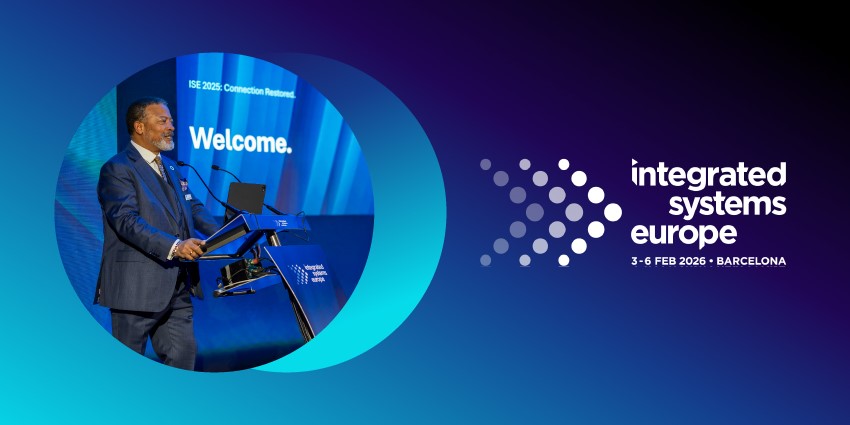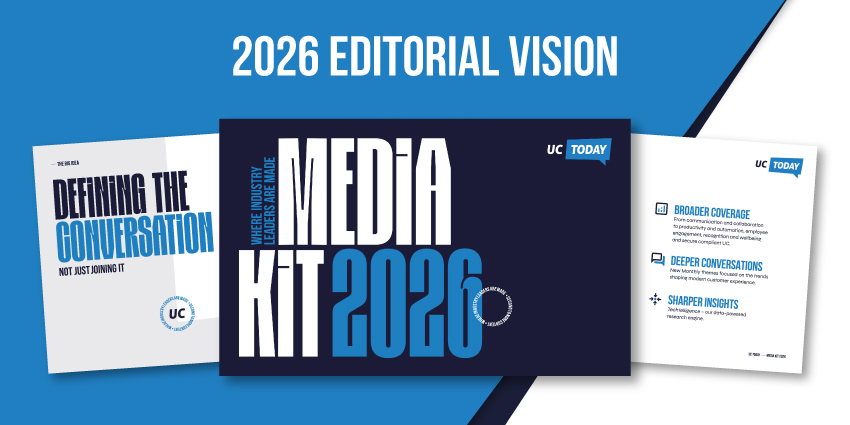AI-powered enterprise technology is revolutionising practically every industry and organisation on the planet. Soaring ambitions around how AI will boost productivity and collaboration while streamlining costs are only in the very nascent stages of being realised. However, that doesn’t make them any less tantalisingly tangible.
From generative AI-driven meeting transcriptions and summaries to camera speaker identification, UC Today has covered the gamut of AI in UC, collaboration and AV and meeting room solutions over the past few years. But those aren’t the only business technologies that AI is set to change forever.
“I truly believe that it’s going to transform work and project management,” Paige Costello, Head of AI at Asana, told UC Today. “What we haven’t yet seen and are going to see a lot more of is people being more precise about what they’re looking for in partnership with AI.”
Costello cites an example where, if you’re an operations leader, your definition of risks that you’re worried about for the projects that are underway is likely different from your peers’ fears.
“Being able to actually be more explicit about the types of insights you want around your work, the types of risks you want surfaced to you, the status reporting that you don’t want to handle,” Costello expanded. “You just want the system to take the data exhaust of people doing their jobs and tell you, ‘We’re on track, we’re off track, here’s something that’s happening in this corner that you ought to know about,’ because it actually ladders up to the goal that your team cares about.”
“It’s going to feel like people have superpowers, but it’s not going to be generic. I believe it’s going to be highly tailored, and it’s going to be across apps, and it requires that notion of coordination and a shared plan and shared goals.”
“I believe that the goal management piece is really unique here, where it’s not just project management. It’s like, ‘Well, why? What are you actually trying to achieve?’ Having context about what is meaningful supports AI in understanding trade-offs and relative importance. That’s going to be a big piece as well as we think about prioritisation.”
Costello’s Asana (And AI) Journey
Costello has been at the project and workplace management tech leader Asana for just over five years. Many organisations have content tools like Google Docs and Figma files. They also have their communication tools, like Microsoft Teams, Zoom, and Slack. Asana complements rather than competes with these platforms, representing “that living system of accountability and that visualisation of the plan,” as Costello described it.
“Asana is really that coordination layer, thinking about how the biggest enterprises in the world can maximise their impact and scale effectively to deliver on their missions,” she added. The company recently moved to “leader” in the Gartner Magic Quadrant for the adaptive portfolio and project management quadrant.
Costello spent the first four years running Asana’s core product organisation, which covers what many people would most associate with the company’s central product proposition. This includes the processes around who is doing what, by when, and why.
“I was a part of adding the ‘why’ piece of that,” Costello explained. “So we launched our OKRs and goal management solution and really looked at how we could better support the director and above cross-department work. That was investing in sets, like other abstractions of work. So, better reporting, more nested portfolios, and just making sure that the dependencies across projects at scale really worked.”
Last year, however, Asana observed that the “future of software is the same as the future of AI,” as Costello put it. “We needed to better understand how to ship enterprise-grade AI solutions for our customers and where we could deliver the most value for them. So, we spun up and reorganised our teams to go after that problem space.”
Asana’s Swathe Of AI-Powered Enhancements
To say Asana has enthusiastically embraced AI would be an understatement. In the last few months alone, it has released compelling AI-powered updates to its solutions, including Asana AI teammates pitched as flexible and customisable collaborators to support teams, and the smart and weighted goal management processes Costello mentioned above.
Asana AI Teammates is one of Costello’s favourite feature origin stories because “it came straight from the curiosity within our engineering team and observation of what it takes to get higher-quality results with AI.”
“We have a very robust automation platform with triggers, conditions, and actions,” she explained. “It works across apps, supports custom scripting, and helps you do certain things in the product. For example, you can say, ‘If this thing happens, do this thing.’ It’s been used for many years to help teams scale their work and automate process management.”
“When the model started performing so well, there were opportunities to generate outputs. But many of the times, they’re only as good as the data that they’re fed, and their instructions are limited in terms of what they actually can do. There was this insight around the automation platform, which provides this very structured scaffolding and a visualisation of what has happened and why.”
“So, we basically realised that we could use LLMs with very specific guidance in the context of Asana, and a person could say, ‘When this form gets submitted, please rename the submission so that it’s easy to understand.’ Or ‘Please keep the custom fields up to date based on the work content in this task so that our reporting is perfect.'”
Costello outlined that the fusion of deterministic automation workflows with Asana’s Gen AI capabilities empowered customers to delegate specific slices of work and process management to AI that they could trust and that they could review and revise.
“Being able to see ‘What did it do, what did it think, and can I undo it or change that?’ It was really core to our insight that we didn’t want to hand massive amounts of work to AI or generic summaries. We saw an opportunity to increase the quality of the output and put it in a more guarded framework within our automation platform.”
What Role Will AI Play In Asana’s Strategy Moving Forward?
The extent of Asana’s AI focus was illustrated by its CEO and Cofounder Dustin Moskovitz waxing lyrical about AI’s impact on Asana’s portfolio (and even greater future potential) during the Q1 FY2025 earnings call earlier this year.
“AI is a disruptive force that will dramatically reshape all of software,” Moskovitz said. “We understand the relationships between people, work, and workflows. That means we direct the AI to consider exactly the right context, not try to decipher what is signal from all the data in your enterprise. With this understanding, AI can begin to provide intelligent assistance, automate tasks, and even act as an agent or teammate, driving work forward.”
Is AI now a cornerstone of Asana’s long-term business strategy?
“What I would say is that we see AI as an accelerant of our mission and our ability to achieve it,” Costello said. “From day one, it has been, ‘Help humanity thrive by enabling the world’s teams to work together effortlessly.’ Dustin started Asana after he created an internal tool at Facebook to try to gain clarity into ‘Our plan, our progress against it, and who’s responsible for that plan.’ He realised that every organisation on earth struggles with the same problems, and there is a better way.”
“From our perspective, AI is really going to help accelerate that, like driving clarity and accountability and maximising the impact of teams as they work together,” she continued. “That’s how we see AI. It’s just another tool in our toolkit.”
“The way we view it for customers is trying to transform the lens with which they’re working with AI because the mental model does matter. If you view AI as a tool, you’re less likely to get productivity gains. If you view it as a teammate, you’re more thoughtful about, ‘What are you delegating to it? Do you expect to give it feedback? Did you give it the right strategic context?’ Then you really see the results.”
If AI is seen as an accelerant currently within Asana’s strategy, will that evolve in tandem with AI’s own rapid evolution — both in terms of its sophistication and intelligence and also in mainstream adoption and normalisation?
“I do think AI unlocks a new set of problems for Asana that we haven’t cracked before,” Costello suggested. “Even with the launch of AI Teammates, we were talking to a customer, and they said, ‘This now opens a whole set of use cases I hadn’t considered using Asana for.’ My perspective here is that our AI investments are changing the shape of our TAM (total addressable market) and the shape of what we’re able to deliver for customers.”
“I imagine that our investments will continue to be across the core problem spaces around orchestrating work at scale and ‘Am I working out on the right thing right now?’ So I think AI still helps us solve a lot of our core knowledge worker problems, but I would say that I still see this as less refinement, more of we’re still cracking new nuts and also doing new data and app integrations that I’m very excited about.”
Potential Challenges Around User Adoption And Privacy & Compliance
Naturally, the rapid pace at which AI has progressed has meant some organisations have struggled to keep up. Many businesses have diverse user bases that aren’t uniformly tech-savvy enough to adapt quickly to AI. Is there a challenge in balancing innovation with an intuitive user experience?
“I think a lot of this first wave of AI technology has had AI too much at the forefront, where people are asking questions like, ‘How do I need to prompt this thing? When do I use this tool versus that tool? Do I need to proactively select a button to make this happen?'” Costello said.
“We ourselves have some variants along this. So, for example, with our smart status capability, you can just push a button, draft status with AI, and Asana will look at the work connected to it and publish an outline. What we think when it comes to simplicity is, ‘Do people have to make a decision? Do they have to look for something or find something? Or can we surface it at the right moment and then allow customisation or opt into getting that thing over time where you want it?'”
Another critical challenge facing every organisation dabbling in AI solutions is around privacy and compliance. How is Asana tackling such a tricky proposition, especially when we’re only at the very early stages of regulatory bodies developing and passing legislation about how best to grapple with AI’s impact on security and compliance?
“Security and data privacy are of the utmost importance to a company like Asana,” Costello said. “We have thousands and thousands of organisations using Asana that compete with each other and are some of the biggest organisations on planet Earth. Our largest deployment includes 200,000 employees who work in Asana every day.”
“We’re pursuing FedRAMP certification right now, which is not only important now but will become increasingly important. We are HIPAA compliant. We want to ensure that people know exactly what is happening, so we have a very transparent set of architectural diagrams that we share with our customers. We also ensure that they have access to us to understand our relationship with AI and the product and how it is all cordoned off to just you.”
Costello also highlighted that Asana helps its customers support their AI councils and boards. Many large companies have cross-functional groups responsible for understanding which vendors they should select, what their company policies should be, and how they should enable workers to become successful with AI.
“A big piece here is also having enterprise-grade tooling that you’ve given the thumbs up for and taught people how to use so that they’re not going and using unaffiliated off-the-shelf tools because employees want to be productive and do good work,” Costello continued. “If you don’t provide them with great tools to help them get their jobs done with AI, they will find something and do it whether you know it or not.”
What Next?
Given the whirlwind trajectory of project management technology and the AI supporting it, what does the future hold for Asana AI? Exciting levels of interoperability.
“Well, I don’t know if you saw, but (we’re working on) smart chat capabilities in Slack,” Costello said. “So, if you’re a Slack user, you can ask questions about stuff that’s happening in Asana and understand risks, whether anyone’s waiting on something from you or what the next steps are for a particular activity. That’s something that’s very recent, and I am excited about it. We are also going to do that with Microsoft Teams.”
Costello sees a significant opportunity for organisations building AI solutions to have more interoperable AI agents and think about what it means for different apps and workflows to connect more successfully.
“We have no desire to replace people’s communication tools or their content tools,” she said. “We have a perspective that cross-team, cross-functional work is the hard stuff that is lacking ‘Who is doing what, by when and why.'”
“One of the things that smart workflows support in the AI Teammates launch is the ability to stitch that together yourself. So you can say, ‘If I get a Slack that sounds like this, do this thing in Asana and then assign it to this person and have them do this, draft them an email and let them approve the email and then ship it as an email.'”
“Those cross-tool back-and-forths simplify so much time and energy and actually really reduce the cost of doing a lot of our work, allowing us to do more strategic work, which is what people want to be doing(…) We’re going to continue down that path and go bigger by being in all the surface areas where employees work.”







